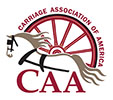
Where there are animals there is manure. Which leads to the age-old question of what to do with all the manure? Research by Amy Bogaard, an archaeobotanist, leads us to believe that manure was used as fertilizer even 7,900 years ago. The most likely scenario is that people observed plants growing well in areas where animal dung naturally fell and from there experimented with different types of manure and when to place it on the fields.
As the human population grew so did our need for transportation, resulting in more and more horses and horse manure. By the late 1800s there were enough horses in New York City that perhaps 250 of today’s garbage trucks would be needed each day to remove the manure. City horse owners bagged their horse manure and sold it for fertilizer. At times manure was worth enough that you could pay for the horse’s keep. The problem was spreading it on fields.
For thousands of years spreading manure meant literally going out in the fields, where large piles of manure had been deposited, and using a hand rake to spread it. Joseph Kemp is considered the ”Father of All Manure Spreaders.” In 1875 he modified an ox cart for his own use, his neighbor saw how much labor it saved him and that was the start of a successful business. Kemp joined William Burpee in 1877 (who does not appear to be directly related to the Burpee Seeds and Plant Co.), then of Derby, Vermont in a business partnership named, The Kemp & Burpee Manufacturing Company. The partnership was a sixteen year success, ending only after the death of William.

By the fall of 1878 Kemp & Burpee had a contract with Richardson Manufacturing Company (Massachusetts), receiving a $5 royalty for each wagon sold. In 1900 the company was restructured, becoming the J.S. Kemp Manufacturing Company, manufacturing their own horse-drawn manure spreader in house – the 20th Century Manure Spreader – in Syracuse, New York. Fire struck on April 1, 1900 destroying the factory. They quickly opened a new location in Newark Valley, New York and by July were shipping spreaders. To accommodate western demand, in 1903 a new factory was built in Waterloo, Iowa. The company was arguably the largest manure spreader manufacturer in the world. In 1906 the Twentieth Century spreader line was sold to International Harvester. The Kemp & Burpee Mfg. Co. “Success” manure spreader line was taken over by Deere & Co in 1910.
While researching Kemp, Joseph Oppenheim of Maria Stein, Ohio came to light. He is called the “inventor of the modern manure spreader.” Oppenheim added paddles to help break up and distribute the manure in a wider pattern. Education was important to Mr. Kemp, he put a tremendous amount of effort into learning as a young man even though he was needed on the family farm. Mr. Oppenheim was a schoolmaster who was concerned about the education of young men who were missing school because they were needed to help fertilize the family farm land.
Not only did these two gentlemen create horse drawn manure spreaders, they also changed the world. Kemp and Oppenheim made it possible for farmers to grow ‘two blades of grass where only one had grown before,’ they changed manure management, and they made it possible for young men (and women) to receive more schooling. Kudos to them!


Curious as to when the PTO (power takeoff) came into use? So was I. My guess of the 1960s was off by over forty years. International Harvester Company was first to market with a PTO on a production tractor in 1918 with Case following along the next year.
Written by Kathleen Haak for the Carriage Association of America
